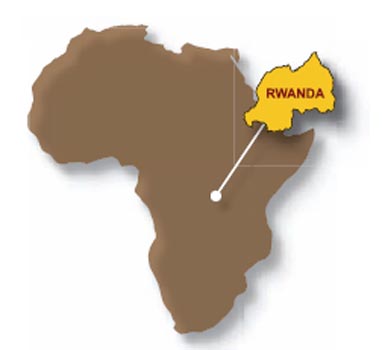Rwanda cattle-herd becomes symbol of recovery after genocide
 Kigali - At the agricultural research station in Songa, nestled in the hills of the Southern Huye province of Rwanda, hundreds of cows graze amidst soft breezes under the warm afternoon sun.
Kigali - At the agricultural research station in Songa, nestled in the hills of the Southern Huye province of Rwanda, hundreds of cows graze amidst soft breezes under the warm afternoon sun.
"This is where it all begins," Jean-Damascene Rwemalika, the director of research at the facility says, pointing to the hills behind him.
The herd is part of the Rwandan government's plan to rebuild the economy destroyed during the 1994 genocide, in which around 800,000 Tutsis and moderate Hutus were killed.
It is a project they hope will help drag the country from the bottom of the world's economies into a modern and prosperous state.
"Everything here was destroyed during the genocide," Rwemalika says. "The people working here were murdered and all the cattle were killed."
The facility was targeted during the early days of the genocide because the land was once owned by a Tutsi king.
Concurrent to the human tragedy, 90 per cent of the country's cattle were slaughtered - largely for food in a collapsed infrastructure but also as a part of an attempt to eradicate the Tutsi cow-rearing culture.
Before the genocide, Rwanda's national herd stood up at around one million. It was almost completely made up of Ankole cows, the traditional Rwandan breed.
Throughout Rwanda's troubled history, cows have played a central role.
While Hutus and Tutsis historically co-existed in Rwanda, the onset of colonial rule, first by Germany and later Belgium, created a division between the two tribes that would ultimately spiral out of control.
The Europeans favoured the Tutsi minority, whom they considered to be closer to the Caucasian race, using them to control the Hutu majority.
In reality, it was difficult to distinguish between Hutu and Tutsi, but colonial authorities decided to determine ethnicity along the lines of wealth.
Anyone owning more than ten cows and having a long, pointed nose was identified as Tutsi, everyone else was Hutu. Ethnic identity cards were issued - something that would later be used in the slaughter.
"People were able to move back and forth between the two tribes depending on their wealth," Freddy Mutanguha, the director of the Kigali Genocide Centre, explains, recounting the story of two brothers, one designated Tutsi and killed in the genocide and the other Hutu, who survived.
In the aftermath of the genocide, as the new leaders of the country were faced with rebuilding a shattered state, they once again turned their attention to Rwanda's cows.
"It was a huge task," Theogene Rutagwenda, Rwanda's chief veterinarian, says. "The war had destroyed everything. The country could not feed itself."
At first, the return of Tutsi exiles who had fled purges by Hutu militants in the 1950s seemed like good news as they brought almost 800,000 new cattle with them, virtually replacing the slaughtered herd.
But areas of the country were over-run. Many headed for the vast Agakera national park in Eastern Rwanda, resulting in an environmental catastrophe as the park's grasslands were destroyed.
They also brought disease and for five years the country's veterinarians fought to contain one epidemic after another.
"We had everything - from mad cow disease to anthrax," Rutagwenda recounts.
At the same, the authorities researched introducing foreign breeds like Jersey, Friesen and Xebu into the herd to boost production.
Eventually, the herd stabilized and a massive artificial insemination project was launched to address the lingering food crisis.
The Ankole cow, Rutagwenda explains, holds cultural value to Rwandans but simply can't produce enough milk to feed a country in desperate need.
Jean-Baptiste Mutabazi, stands in his small farmyard 20 kilometres outside the town of Gicumbi. Two cross-breed cows graze nearby.
"I used to get two litres of milk per day," he says. "Today I get 12 litres- enough to feed my family and sell some in the market."
Currently, the vast majority of the Rwandan population lives in the countryside and generates income from subsistence farming.
In the United Nations' 2008 Human Development Index, which charts the quality of life in countries around the world, Rwanda ranks 14th from the bottom.
Since 1999, the Rwandan government has distributed thousands of pregnant cows to people like Muzabazi.
Anyone receiving a cow is required to pass the offspring on to neighbours to promote good will and to share the wealth.
The hope, Rwandan officials say, is that the added income will allow farmers the resources to help in educating their children.
In turn, the government is hoping that the children will eventually migrate into cities towards professional careers, helping to alleviate the pressure and conflict caused by the scarcity of land in the tiny country. (dpa)